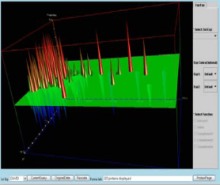|
|
|||||||||||||||||||||||||
|
|||||||||||||||||||||||||
|
Search
Scripts
News by JavaScriptSearch
JS-Sorcerer Accelerates Research at University of Connecticut
JavaScriptSearch DHI Technologies announced that their JavaScript editor JS-Sorcerer helped scientists at the UConn Proteomics create a cross-browser JavaScript application for Biological Mass Spectrometry (PBMS) Lab. Through collaborative development efforts between DHI and the UConn PBMS lab, JS-Sorcerer translated Proteome-3D JavaScript code now supports all popular web browsers. JS-Sorcerer performs syntax checking and variable type and flow analysis on standalone JavaScript files, and provides type-safe linking for applications and projects that consist of multiple JavaScript files. Errors are detected and reported at compile time, eliminating the need to invoke a browser simply to catch syntax errors and typographical errors. JS-Sorcerer enables developers to write cross-browser code by making use of a standard interface to JavaScript (ECMAScript), W3C DOM, and XMLHttpRequest (AJAX) objects.
Proteome-3D is a web-based application consisting of a set of HTML, JavaScript, Java Applet and Java Servlet files. Scientists at the PBMS Lab use web browsers to connect to Proteome-3D to query and retrieve different experimental results they want to study. Though the initial application worked with Internet Explorer, the JavaScript code written for Proteome-3D did not support other popular browsers such as Mozilla/Firefox, Netscape, Opera, and Safari. Limiting its use to Internet Explorer only is not feasible to extend it to a broader base in the scientific community. There were also performance issues in displaying protein datasets due to the a Java Applet/HTTP/Servlet architecture for accessing the local database through the server. The UConn PBMS lab engaged DHI to help solve the problems mentioned above. JS-Sorcerer finds errors in standard JavaScript programs, and translate the code to run on all popular browsers. "The most impressive feature of JS-Sorcerer, from our perspective, was its ability to automatically translate JavaScript into multi-browser compatible code," says Debbie Lundgren, the JavaScript programmer at the PBMS Lab who developed Proteome-3D. For Debbie, JS-Sorcerer was particularly attractive as modifying her code to use standard (ECMAScript and W3C DOM compatible) JavaScript will allow her to support all popular web browsers. This also relieves her from cluttering her JavaScript with various browser-detection code, and from learning how different objects and functions behave in different web browsers. After using JS-Sorcerer to translate Proteome-3D, it now supports Netscape, Mozilla/Firefox, Safari, Opera, and Internet Explorer. Additional advantages of JS-Sorcerer became evident as it finds errors in the JavaScript code. "We wanted to make Proteome-3D a cross-browser compatible web application," comments Dr. David Han, Principle Investigator at the UConn PBMS lab. "With JS-Sorcerer's help, we can now share it with a larger scientific community to access the web interface using different browsers." "We are very pleased that JS-Sorcerer played an important role in furthering the technologies to support biological research at the UConn PBMS lab," comments Roger Franklin, CEO of DHI Technologies. "We want scientists to focus their dedicated efforts to find cures, and not on learning browser discrepancies. We will take care of making their web application robust and cross-browser compliant." One unexpected benefit was the performance improvement gained
by switching from an Applet/Servlet database interface to the
AJAX/XMLHttpRequest architecture supported by JS-Sorcerer. JS-Sorcerer
helped find programming errors during application development and
generated cross-browser JavaScript code, bringing productivity benefits
to JavaScript developers.
|
|
|
|
|
|
| Copyright © 1998 - 2018 DevStart, Inc. All Rights Reserved | ||




 NEWS BY MONTH
NEWS BY MONTH EDITOR'S DESK
EDITOR'S DESK SUBMIT NEWS
SUBMIT NEWS

